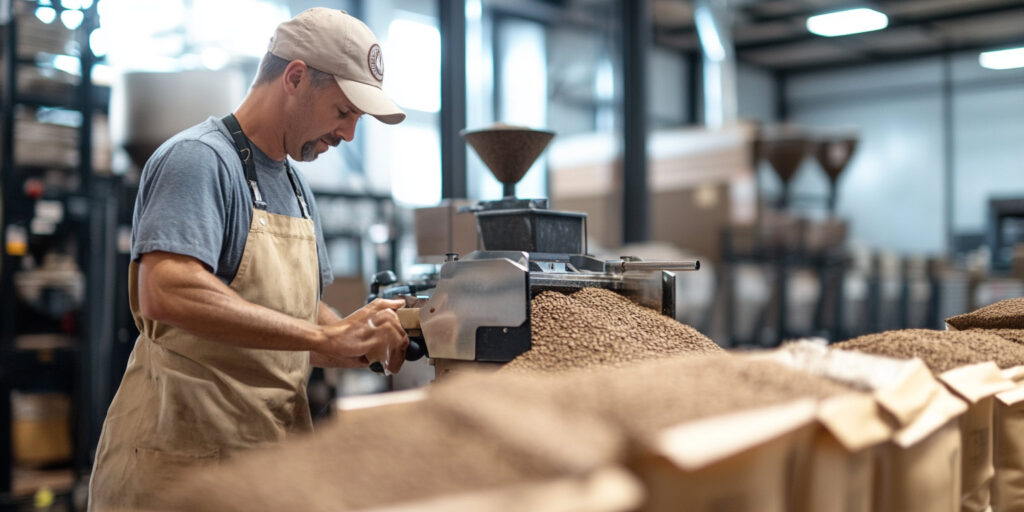
¿Qué es la Industria de Logística y Distribución?
La industria de la logística y distribución desempeña un papel fundamental en el traslado de productos de un lugar a otro. Involucra la planificación, coordinación y ejecución del transporte de bienes desde los fabricantes hasta los consumidores. Esta industria abarca todo, desde el almacenamiento hasta el transporte, garantizando que los productos lleguen a su destino de manera eficiente y puntual. En el caso del empaque de café, la logística es esencial para mover los granos desde las fincas hasta las plantas de procesamiento, y eventualmente a los puntos de venta. Al gestionar todas las etapas desde el empaque hasta la entrega, las empresas logísticas aseguran una distribución eficaz del café en diversas regiones.
Cadena de Suministro del Café
La cadena de suministro del café comprende varias etapas, desde el cultivo de los granos hasta la entrega del producto final empacado al consumidor. Primero, los granos se cosechan en fincas ubicadas principalmente en países como Brasil, Colombia y Etiopía. Luego son procesados, secados y tostados en instalaciones especializadas. Después del tueste, el café se empaca y se prepara para su distribución. El café empacado se envía a centros de distribución o almacenes antes de llegar a minoristas, cafeterías y supermercados. Finalmente, los consumidores adquieren el producto en tiendas locales o en línea.
Centros de Distribución de Café en EE.UU. y Sus Ubicaciones
Aquí tienes una lista de centros de distribución de café importantes en Estados Unidos:
- Centro de Distribución de Starbucks – York, Pensilvania
- Centro de Distribución de Keurig Dr Pepper – Knoxville, Tennessee
- Centro de Tostado y Distribución de Peet’s Coffee – Alameda, California
- Centro de Distribución de Nestlé USA – Freehold, Nueva Jersey
- Centro de Distribución de Community Coffee – Port Allen, Luisiana
- Centro de Distribución de S&D Coffee and Tea – Concord, Carolina del Norte
- Centro de Distribución de Caribou Coffee – Minneapolis, Minnesota
Logística del Empaque de Café
La logística del empaque de café se refiere a la coordinación del empacado para su distribución y entrega. Una vez tostado el café, debe empacarse adecuadamente para mantener su frescura y evitar la contaminación. Se utilizan distintos tipos de materiales, como bolsas al vacío o envases resellables, para prolongar la vida útil del producto. Los equipos logísticos se encargan de organizar el proceso de empaque y preparar los productos para el envío. También es fundamental asegurar el etiquetado correcto, la colocación de códigos de barras y la paletización para facilitar el manejo del café durante el transporte y la distribución.
Diferencia entre Logística y Distribución en la Cadena de Suministro
Aunque a menudo se confunden, la logística y la distribución dentro de la cadena de suministro son procesos distintos. La logística se enfoca en el movimiento y almacenamiento eficiente de los productos, abarcando desde el transporte hasta el almacenamiento. Se ocupa del flujo físico de los bienes. Por otro lado, la distribución en la cadena de suministro abarca todo el proceso, desde la obtención de materias primas hasta la entrega del producto final al cliente. En el contexto del café, la distribución incluiría desde el cultivo del grano hasta su venta en una cafetería, mientras que la logística se centra en el transporte y el empaque.
